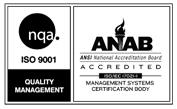Air-operated double diaphragm pumps utilize flexible diaphragms to separate the fluid and compressed air supply. The diaphragms are driven by compressed air to minimize mechanical stress and improve their lifespan. The air valve system, which has two outlet and inlet valve balls, opens and closes as fluids pass through the pump.
The AODD pump starts the operation when the air distribution system directs the air to the air chamber and the diaphragm. The air is usually directed to the back side of the diaphragm, which moves the diaphragm toward the liquid chamber. In this process, the opposite diaphragm is pulled inward. The atmospheric pressure forces the fluid to reach the inlet manifold. This makes the liquid to flow into the liquid chamber, moving past the inlet valve ball.
Once the liquid chamber on one side of the AODD pump reaches capacity, compressed air is redirected to the back of the opposite diaphragm, causing it to pull away while the other is forced towards the liquid chamber. This process closes the intake valve ball and lifts the discharge valve ball off its seat, allowing the liquid to flow through the discharge manifold. The process is then repeated on the opposite side, with each diaphragm going through one discharge and one suction stroke before returning to its original position.
Major Components of Air-Operated Double Diaphragm Pumps
Diaphragms: The diaphragms are the heart of the air-operated double diaphragm pumps, responsible for the suction and discharge of fluid. They move back and forth to create the pumping action. Diaphragms are crafted from a range of materials, like rubber, Teflon or other elastomers, selected depending on their compatibility, with the liquid being pumped. Usually, pumps have two diaphragms linked by a rod. As air pushes one diaphragm the other is pulled, ensuring a co-ordinated motion.
Air Valve: The air valve regulates the flow of compressed air to each diaphragm managing the pumps movement. Two typical types of air valves are the spool valve and pilot valve which efficiently switch the airflow between diaphragms. This valve guarantees that one diaphragm receives air while the other releases it enabling the back-and-forth motion.
Chambers: The pump chambers are responsible, for pulling and pushing out the fluid. Each diaphragm operates within its chamber engineered to handle the pressure and characteristics of the pumped fluids, including abrasive or solid containing substances. When one diaphragm generates a vacuum in its chamber it draws fluid in while the other diaphragm expels fluid, from its chamber.
Check Valves: Check valves ensure that fluid flows in only one direction, preventing backflow and maintaining efficient pumping. Common types include ball valves, flap valves, and flat valves. The choice depends on the fluid characteristics and application requirements. There are typically four check valves in an air-operated double diaphragm pump, two at the inlet and two at the outlet of each chamber.
Manifolds: Manifolds connect the pump chambers to the inlet and outlet ports, guiding the fluid into and out of the air-operated double diaphragm pumps. They are created to reduce resistance to fluid and guarantee a flow. They can be set up in manner to meet installation needs. Manifolds are commonly crafted from materials that work well with the liquid being pumped, like steel, aluminum or plastic.


Get Social